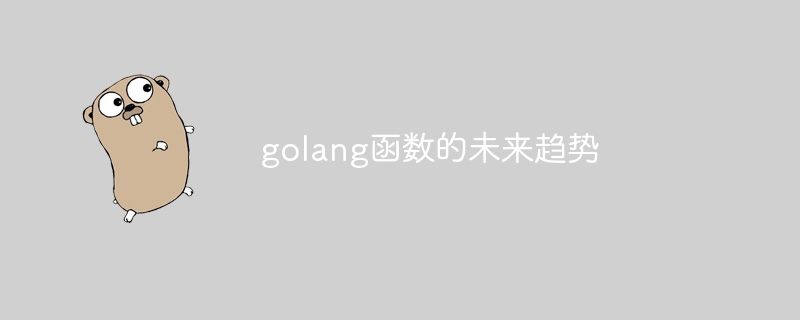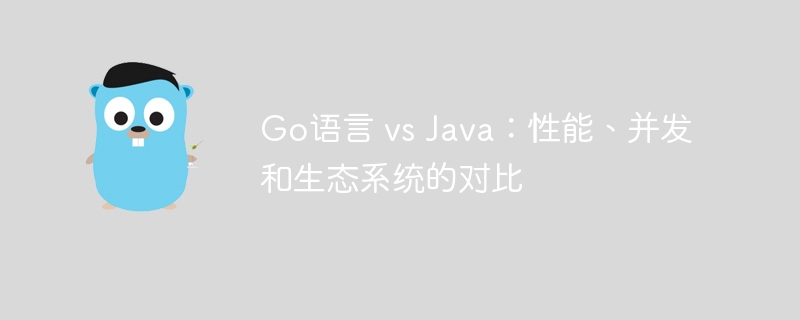Golang图片处理:学习如何添加水印和文字
引言:
在现代数字化和社交媒体的时代,图片处理已经成为了一项重要的技能。无论是个人使用还是商务运营,添加水印和文字都是常见的需求。在本文中,我们将探讨使用Golang进行图片处理的方法,学习如何添加水印和文字。
背景:
Golang是一门开源的编程语言,以其简洁的语法、高效的性能和强大的并发能力而闻名。它已经成为许多开发者的首选语言之一。在Golang中,有一些强大的第三方库,使得图片处理变得容易而且高效。
添加水印:
添加水印是一种保护个人或商业图片版权的常见技术。下面是一个示例,展示了如何使用Golang添加水印到一张图片上:
package main
import (
"image"
"image/draw"
"image/jpeg"
"os"
)
func main() {
// 打开原始图片
file, err := os.Open("original.jpg")
if err != nil {
panic(err)
}
defer file.Close()
// 解码图片
img, _, err := image.Decode(file)
if err != nil {
panic(err)
}
// 创建一个画布
bounds := img.Bounds()
canvas := image.NewRGBA(bounds)
// 绘制原始图片到画布上
draw.Draw(canvas, bounds, img, image.Point{}, draw.Src)
// 添加水印
watermark := image.NewRGBA(image.Rect(0, 0, 100, 50))
draw.Draw(canvas, image.Rect(bounds.Dx()-100, bounds.Dy()-50, bounds.Dx(), bounds.Dy()), watermark, image.Point{}, draw.Src)
// 保存处理后的图片
output, err := os.Create("output.jpg")
if err != nil {
panic(err)
}
defer output.Close()
// 编码保存到文件
jpeg.Encode(output, canvas, nil)
}以上代码首先打开了一张名为"original.jpg"的图片文件。然后将其解码为一个image.Image对象,接着创建了一个新的RGBA画布,并将原始图片绘制到画布上。最后,创建了一个100x50大小的水印,并将其绘制到画布的右下角。最终生成的带有水印的图片被保存为"output.jpg"。
添加文字:
添加文字是另一种常见的图片处理需求,它可以用来添加标题、描述或其他说明。下面是一个示例,展示了如何使用Golang在图片上添加文字:
package main
import (
"image"
"image/draw"
"image/jpeg"
"os"
"github.com/golang/freetype"
"github.com/golang/freetype/truetype"
"golang.org/x/image/font"
)
func main() {
// 打开原始图片
file, err := os.Open("original.jpg")
if err != nil {
panic(err)
}
defer file.Close()
// 解码图片
img, _, err := image.Decode(file)
if err != nil {
panic(err)
}
// 创建一个画布
bounds := img.Bounds()
canvas := image.NewRGBA(bounds)
// 绘制原始图片到画布上
draw.Draw(canvas, bounds, img, image.Point{}, draw.Src)
// 添加文字
fontBytes, err := os.ReadFile("font.ttf")
if err != nil {
panic(err)
}
font, err := freetype.ParseFont(fontBytes)
if err != nil {
panic(err)
}
context := freetype.NewContext()
context.SetDPI(72)
context.SetFont(font)
context.SetFontSize(24)
context.SetClip(bounds)
context.SetDst(canvas)
context.SetSrc(image.Black)
pt := freetype.Pt(10, 10+int(context.PointToFixed(24)>>6))
context.DrawString("Hello, Golang!", pt)
// 保存处理后的图片
output, err := os.Create("output.jpg")
if err != nil {
panic(err)
}
defer output.Close()
// 编码保存到文件
jpeg.Encode(output, canvas, nil)
}以上代码与添加水印的示例类似,但我们使用了第三方库freetype来添加文字。首先打开了一张名为"original.jpg"的图片文件,然后解码为image.Image对象。接着创建了一个新的RGBA画布,并将原始图片绘制到画布上。然后,加载了一个TrueType字体文件并将其解析为freetype.Font对象。创建了一个freetype.Context对象,并设置了字体、字号等绘制参数。最后,调用了DrawString函数,在画布上添加了文字。最终生成的图片被保存为"output.jpg"。
结语:
Golang作为一门强大的编程语言,拥有丰富的第三方库和工具,使得图片处理变得简单而高效。本文介绍了如何使用Golang添加水印和文字到图片上,并提供了相应的代码示例。希望本文可以帮助读者学习如何使用Golang进行图片处理,并在实际应用中发挥作用。





